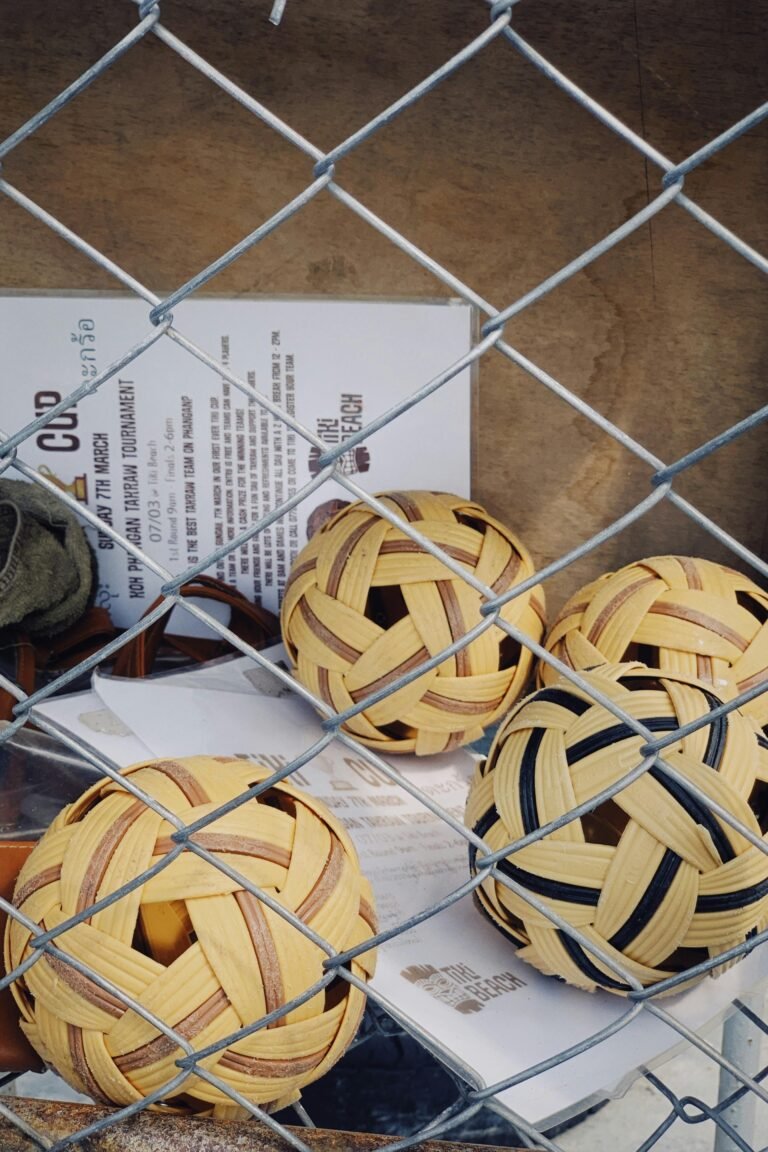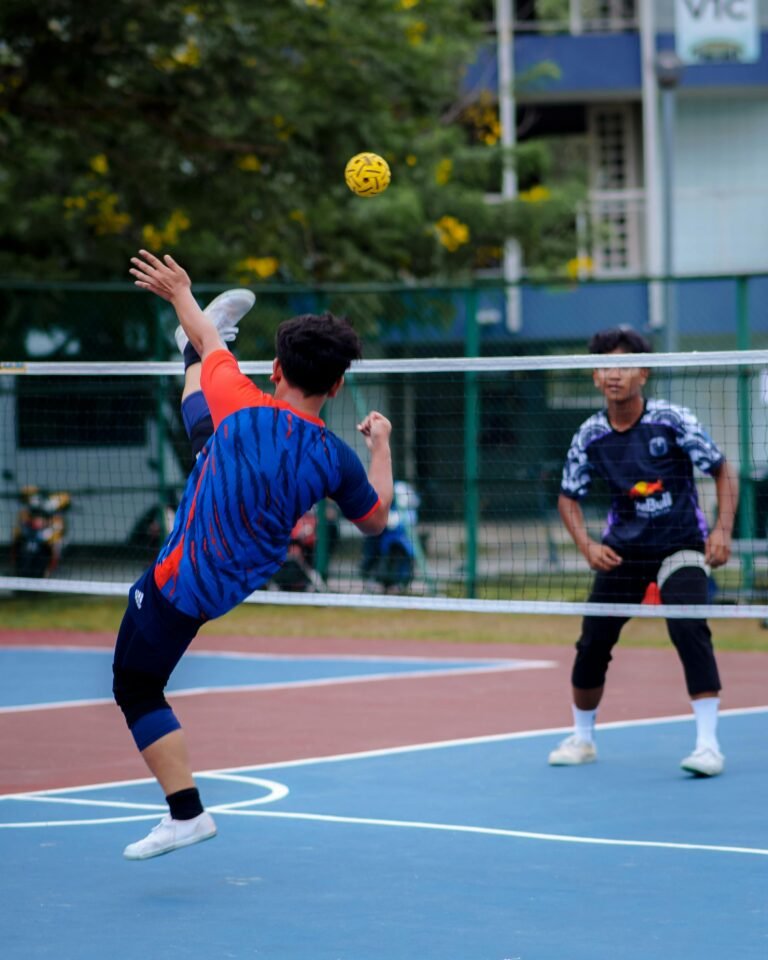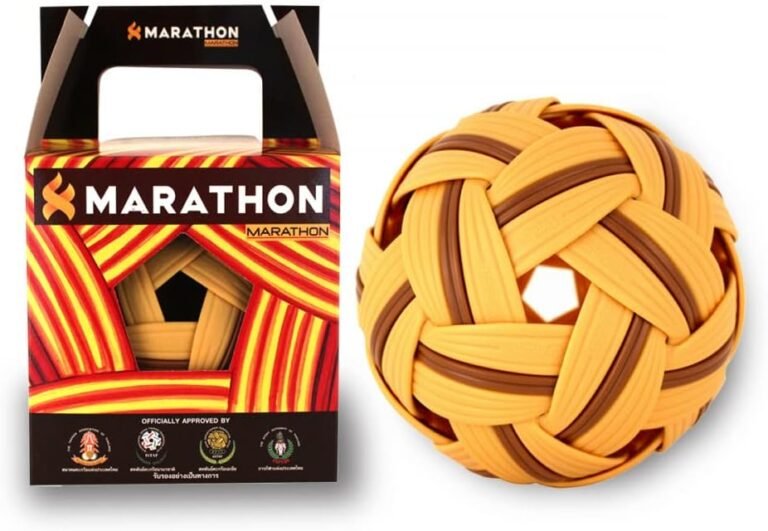Introduction to Sepak Takraw
Sepak takraw, a sport that captivates athletes and spectators alike, originated from Southeast Asia and is often considered a vibrant reflection of the region’s rich cultural heritage. Traditionally, it is believed that sepak takraw has roots in the 15th century, evolving from earlier forms of kicking games. Over the years, this unique sport has gained immense popularity not only in its home region but also on a global scale, thanks to its dynamic gameplay and remarkable athleticism.
The objective of sepak takraw is quite straightforward yet requires significant skill. Two teams, each composed of either two players (doubles) or three players (sepak takraw team), aim to outscore each other by hitting a rattan ball over a net and into the opposing court using only their feet, head, knees, and chest. This restriction on utilizing the hands heightens the level of difficulty while showcasing an impressive array of kicks, strikes, and acrobatic maneuvers, reminiscent of elements found in volleyball, soccer, and gymnastics.
The basic rules of sepak takraw are relatively uncomplicated. Matches are typically played to a predetermined number of points, and the team that wins two out of three sets emerges victorious. The game is characterized by its fast pace, requiring players to not only possess physical endurance but also exceptional coordination and timing. The net used in sepak takraw is comparable to that of volleyball, albeit lower in height to accommodate the unique kicking techniques employed in play.
In addition to its competitive nature, sepak takraw holds deep cultural significance within Southeast Asian societies. It serves as a source of community pride and unity, often played during festivals and social gatherings, thereby reinforcing the sport’s role as a key component of cultural identity. As its global appeal continues to grow, the demand for sepak takraw equipment, such as the rattan ball and net, has also increased, inviting newcomers to partake in this exhilarating game.
The Excitement of the Game: Skills and Techniques
Sepak takraw is an exhilarating sport that combines elements of traditional martial arts, volleyball, and soccer, demanding a unique set of skills and techniques. Essential attributes for players include agility, balance, and coordination, all of which contribute to the fluidity and excitement of the game. Players must be able to move swiftly across the court, dodging opponents while maintaining control over the rattan ball. This physical prowess is greatly enhanced through rigorous training and consistent practice.
One of the most visually impressive moves in sepak takraw is the aerial kick, also known as “kick” in the game’s vernacular. This technique involves a player using a single foot to strike the ball while airborne, showcasing not only their athleticism but also their timing and precision. The roll spike, another crucial maneuver, requires players to execute a swift roll to the ground, followed by an explosive upward movement to deliver a powerful strike. Mastering these skills allows players to perform at higher levels and significantly increases their effectiveness during matches.
Teamwork is a vital aspect of sepak takraw, as individual talent alone cannot secure victory. Effective communication and understanding among players can greatly improve gameplay. Teams typically develop strategies that utilize each member’s strengths while minimizing weaknesses, which is vital for success on the court. Watching a well-coordinated team can be a thrilling experience, as they seamlessly execute complex plays that result in scoring points.
For newcomers looking to improve their skills in sepak takraw, incorporating drills that focus on footwork, reflexes, and aerial techniques can prove beneficial. Consistent practice, coupled with an understanding of gameplay dynamics, will not only enhance individual skills but also foster a sense of enjoyment and camaraderie within the sport. This unique blend of athleticism, strategy, and teamwork makes sepak takraw an exhilarating experience for both players and spectators alike.
Let’s hope sepak takraw catches on in the UK just like other emerging sports have in recent years, bringing people together, building communities, and inspiring a whole new generation of players. For context on how new sports have grown in the UK, see this guide to padel tennis – it’s exciting to think sepak takraw could follow a similar path.



